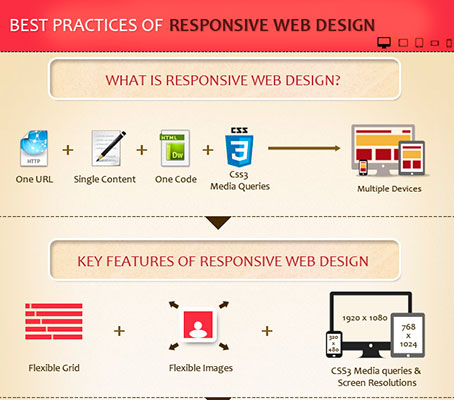Basic Facets Of Web Design: Guidelines For Creating A User-Centric Website
Basic Facets Of Web Design: Guidelines For Creating A User-Centric Website
Blog Article
Web Content Created By-Hovmand Ehlers
When it concerns site style, guaranteeing user-friendliness is essential. From receptive design to structured navigating, every aspect plays an essential function in developing a website that deals with your audience's demands. However what about the finer information that can make or break an individual's searching experience? Remain tuned as we reveal some often-overlooked tips that can elevate your internet site's usability to the following level, making it absolutely attract attention in the electronic landscape.
Significance of Responsive Layout
Responsive layout is an important element of modern-day site advancement. Ensuring your website is receptive methods that it can adjust to various screen dimensions and gadgets, giving a smooth experience for individuals.
With the increasing use smart devices and tablet computers to access the web, having a receptive style is essential for reaching a broader audience. It helps in enhancing individual experience by making your internet site simple to navigate and read on any type of device.
In addition, responsive style can positively impact your online search engine positions, as online search engine like Google focus on mobile-friendly internet sites. By having a receptive design, you're additionally future-proofing your web site, as brand-new gadgets with varying screen sizes remain to emerge.
Simplify Navigating Framework
To enhance customer experience and help with simple access to info on your site, improving the navigation framework is critical. When making optimize your website for google search , focus on creating a clear and intuitive navigation menu that assists visitors find what they're seeking rapidly.
Restriction the number of food selection things to the fundamentals, grouping relevant pages together to stay clear of frustrating customers. Use detailed labels that clearly suggest the web content of each web page, making it easier for individuals to comprehend where each web link will take them.
Consider applying dropdown food selections for subcategories to stop jumbling the main navigating bar. In addition, include a search bar plainly on the web page for users who favor searching for details details.
Focus on mobile responsiveness in your navigating layout to make sure very easy access on all tools.
Enhance Web Page Lots Speed
Improving page tons speed is vital for retaining visitors on your internet site. Slow-loading pages frustrate individuals and can bring about high bounce rates. To optimize page lots rate, start by optimizing photos. Compress photos without compromising top quality to minimize their file dimensions.
In addition, enable web browser caching to save regularly accessed resources locally, quickening load times for returning site visitors. Minify CSS, JavaScript, and HTML files by removing unneeded characters, remarks, and formatting, enhancing lots rate.
Take into consideration utilizing a content delivery network (CDN) to distribute your site's material throughout multiple web servers worldwide, reducing latency for users accessing your site from various places. Finally, restrict the use of third-party manuscripts and plugins, as they can substantially influence load times.
helpful resources
In conclusion, by including responsive layout, streamlining navigating, and optimizing web page load rate, you can produce an easy to use website that appeals to a wider target market and enhances individual experience. These essential elements make sure that site visitors can quickly accessibility and browse your site across various tools, leading to boosted engagement and fulfillment. By concentrating on these essential facets, you can build a successful website that keeps individuals returning for even more.
